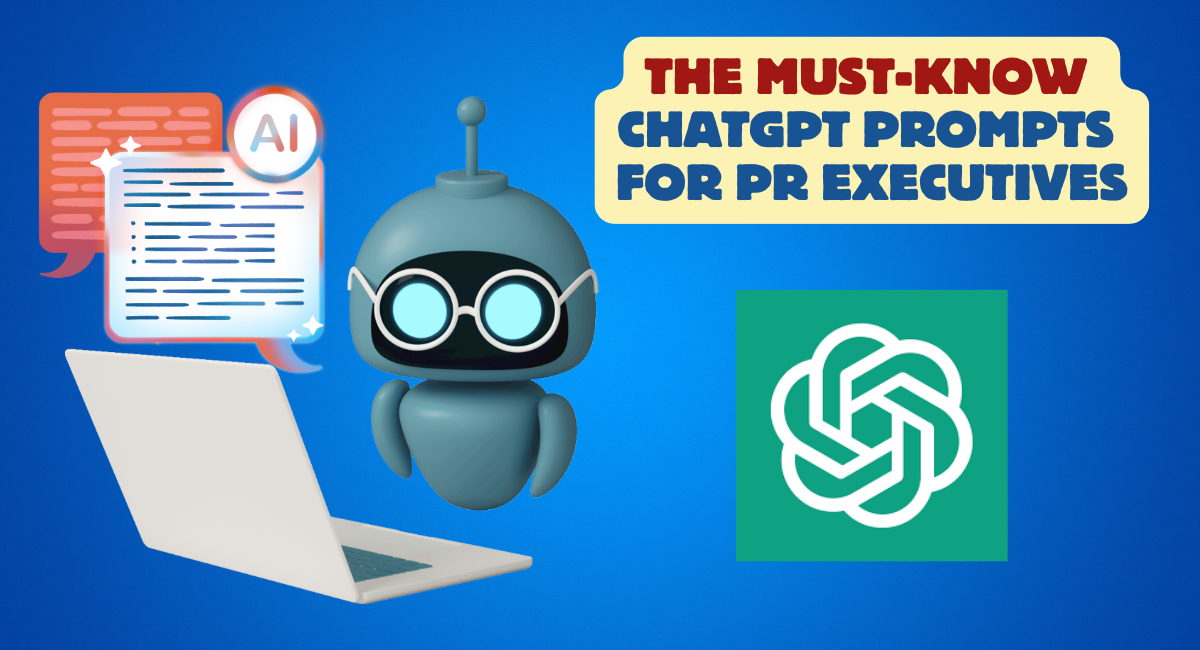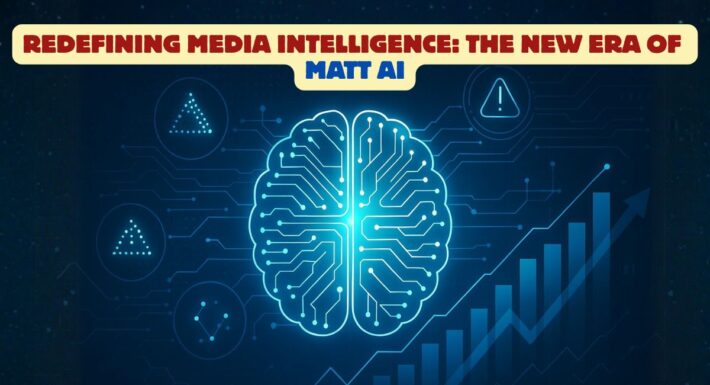Top 10 ChatGPT Prompts Every Public Relations Executive Should Master

Picture this: It’s 7 AM, and you’re staring at three crisis scenarios, five pending media pitches, and a strategic plan that needs to be on the CEO’s desk by noon. Sound familiar? As public relations professionals navigate an increasingly complex media landscape, AI tools like ChatGPT have emerged as powerful allies in managing the daily whirlwind of communications challenges. But here’s the catch – the quality of your AI assistance depends entirely on the prompts you use.
After analyzing hundreds of PR workflows and consulting with communications teams across industries, we’ve identified the ten most effective ChatGPT prompts that can transform how PR executives approach their daily responsibilities. These aren’t just generic templates – they’re battle-tested formulas that address the specific challenges you face when managing media monitoring, crafting narratives, and protecting brand reputation.
1. The Crisis Response Framework Prompt
The Prompt: “Act as a crisis communications expert. I’m facing a situation where [describe crisis]. Please create a comprehensive response plan that includes: 1) Immediate actions within the first hour, 2) Key stakeholder messaging for employees, customers, media, and investors, 3) Social media response templates, 4) Internal communication protocols, and 5) Long-term reputation recovery strategies. Consider both traditional and digital media channels in your response.”
This prompt transforms ChatGPT into your crisis communications partner, generating structured responses that align with best practices in 24/7 situation management. The beauty of this framework lies in its comprehensive approach – you’re not just getting a press release template, but a complete strategic roadmap that addresses every critical touchpoint during a crisis.
Pro tip: Enhance this prompt by adding industry-specific context or regulatory considerations relevant to your sector. For example, healthcare communications professionals might add HIPAA compliance requirements, while financial services teams could include SEC disclosure obligations.
2. The Executive Briefing Synthesizer
The Prompt: “Analyze the following media coverage about [company/topic] from the past [timeframe]. Synthesize this into a concise executive briefing that includes: 1) Top 3 key messages appearing across coverage, 2) Sentiment analysis with specific examples, 3) Emerging narratives or potential issues, 4) Competitive positioning insights, and 5) Recommended actions. Format this for a 5-minute C-suite presentation.”
Every PR professional knows the challenge of distilling mountains of media coverage into actionable intelligence. This prompt helps you create the kind of executive news briefings that senior leadership actually reads and acts upon. By specifying the output format and time constraints, you ensure the AI delivers precisely what busy executives need.
3. The Media Pitch Personalizer
The Prompt: “Help me craft a personalized media pitch for [journalist name] at [publication]. Based on their recent articles about [topics], create a pitch for [your story] that: 1) References their specific beat and recent coverage, 2) Explains why this story matters to their audience, 3) Provides three unique angles they haven’t covered, 4) Includes relevant data points or expert sources, and 5) Suggests optimal timing for coverage. Keep it under 200 words.”
Generic spray-and-pray pitching is dead. Today’s media relations demand personalization at scale, and this prompt helps you achieve exactly that. By feeding ChatGPT specific information about journalists and their coverage areas, you can generate pitches that feel custom-crafted while maintaining efficiency across your outreach efforts.
4. The Stakeholder Message Mapper
The Prompt: “Create a stakeholder messaging matrix for [announcement/issue]. Include separate key messages for: employees, customers, investors, media, partners, and regulators. For each audience, provide: 1) Primary concern they’ll have, 2) Key message addressing that concern, 3) Supporting proof points, 4) Anticipated questions and responses, and 5) Preferred communication channel. Present in a table format.”
Effective PR requires speaking different languages to different audiences while maintaining consistency in your core narrative. This prompt generates comprehensive messaging frameworks that ensure every stakeholder receives relevant, compelling information through their preferred channels.
5. The Content Calendar Generator
The Prompt: “Develop a 30-day content calendar for [company/brand], focusing on [objective]. Include: 1) Daily content themes aligned with our key messages, 2) Specific post ideas for LinkedIn, Twitter, and company blog, 3) Tie-ins to relevant industry events or awareness days, 4) Employee spotlight opportunities, 5) Customer success story slots, and 6) Thought leadership topics for executives. Consider our target audience of [describe audience] and current industry trends.”
Strategic content planning is often overlooked during daily fire drills. This prompt helps PR teams build comprehensive content calendars that balance promotional messages with valuable thought leadership, ensuring a consistent brand presence across all channels.
6. The Competitive Intelligence Analyzer
The Prompt: “Analyze the following information about our competitor’s recent announcements: [paste information]. Provide: 1) Key strategic moves they’re making, 2) Potential impact on our market position, 3) Gaps or weaknesses in their approach, 4) Opportunities for us to differentiate, 5) Recommended proactive and reactive messaging strategies. Focus on actionable insights rather than general observations.”
Understanding competitive dynamics is crucial for effective PR strategy. This prompt transforms raw competitive intelligence into strategic media analysis that helps you stay ahead of market narratives and position your organization effectively.
7. The Award Submission Optimizer
The Prompt: “Help me write a compelling award submission for [award name] in the category of [category]. Our entry focuses on [project/achievement]. Create: 1) An attention-grabbing executive summary (100 words), 2) Clear demonstration of how we meet each judging criterion, 3) Quantifiable results and impact metrics, 4) Compelling narrative that shows innovation and leadership, 5) Strong conclusion that reinforces why we deserve to win. Incorporate storytelling techniques while maintaining professional credibility.”
Awards and recognition programs offer valuable third-party validation, but winning requires more than just great work – it demands great storytelling. This prompt helps PR teams craft submissions that stand out in competitive fields by balancing data-driven results with compelling narratives.
8. The Influencer Outreach Architect
The Prompt: “Design an influencer outreach strategy for [campaign/product]. Identify: 1) Types of influencers most relevant to our target audience (mega, macro, micro, nano), 2) Key topics and values they should align with, 3) Compelling partnership propositions for each tier, 4) Content collaboration ideas that feel authentic, 5) Metrics for measuring campaign success. Include sample outreach messages that avoid common pitfalls.”
Modern PR extends far beyond traditional media relations. This prompt helps teams develop sophisticated influencer strategies that feel authentic and deliver measurable results, whether you’re working with PR agencies or managing programs in-house.
9. The Thought Leadership Topic Generator
The Prompt: “Generate 10 thought leadership topics for our [executive title] who specializes in [area of expertise]. Topics should: 1) Address current industry challenges or trends, 2) Showcase unique perspective or contrarian viewpoints, 3) Include potential data points or research to reference, 4) Suggest formats (op-ed, LinkedIn article, podcast, etc.), 5) Identify target publications or platforms. Ensure topics position the executive as a forward-thinking leader rather than just promoting our company.”
Establishing executives as thought leaders requires consistent, insightful content that goes beyond product promotion. This prompt generates topics that position your leaders as industry visionaries while subtly reinforcing your organization’s expertise.
10. The Measurement Report Builder
The Prompt: “Create a PR measurement report template analyzing [campaign/time period]. Include: 1) Executive summary with top 3 achievements, 2) Media coverage analysis (volume, reach, share of voice, sentiment), 3) Key message penetration rates, 4) Earned media value calculations, 5) Social media engagement metrics, 6) Website traffic from PR efforts, 7) Lead generation or business impact metrics, and 8) Recommendations for optimization. Present data in a visually-friendly format with clear insights, not just numbers.”
Demonstrating PR’s impact on business outcomes remains one of the profession’s greatest challenges. This prompt helps create comprehensive reports that connect communications activities to tangible results, essential for securing continued investment in PR programs.
Maximizing Your ChatGPT Success: Implementation Best Practices
While these prompts provide powerful starting points, their effectiveness multiplies when combined with strategic implementation approaches. Here are key strategies for integrating AI-powered assistance into your PR workflow:
Layer Your Prompts: Don’t stop at the first response. Use follow-up prompts to refine and expand initial outputs. For example, after generating crisis messaging, ask ChatGPT to “make this more empathetic” or “add specific examples for the healthcare industry.”
Create Prompt Libraries: Build a repository of successful prompts tailored to your industry and common scenarios. This becomes particularly valuable for teams, ensuring consistent quality across all AI-assisted work.
Combine with Human Insight: ChatGPT excels at generating frameworks and initial drafts, but human judgment remains irreplaceable for nuance, cultural sensitivity, and strategic decision-making. Use AI to accelerate your work, not replace your expertise.
Iterate and Improve: Track which prompts generate the most useful outputs and refine them over time. What works for technology PR might need adjustment for healthcare or financial services communications.
The Future of AI-Powered PR
As AI tools continue to evolve, the PR professionals who thrive will be those who master the art of human-AI collaboration. These prompts represent just the beginning of what’s possible when communications expertise meets artificial intelligence. By starting with these proven frameworks and adapting them to your specific needs, you’ll not only save time but also elevate the strategic value you bring to your organization.
Remember, the goal isn’t to replace human creativity and relationship-building – the core of great PR – but to augment these skills with AI-powered efficiency. Whether you’re managing enterprise communications or working with government services, these prompts provide a foundation for more strategic, impactful public relations.
The communications landscape will continue to evolve at breakneck speed. But armed with these ChatGPT prompts and a strategic approach to AI integration, PR executives can stay ahead of the curve, delivering exceptional results while maintaining the human touch that defines great public relations. Start experimenting with these prompts today, and watch as your PR practice transforms from reactive to proactive, from tactical to strategic, and from overwhelmed to empowered.

Ted Skinner
Ted Skinner is the VP of Marketing at Fullintel with extensive experience in AI implementation for public relations and media monitoring. A recognized expert in crisis communication strategy and competitive intelligence, Ted specializes in developing practical applications for AI in PR workflows. His thought leadership focuses on helping PR professionals leverage technology to enhance strategic communications while maintaining the human insight that drives successful media relations.
Read more of Ted’s insights on AI-powered PR strategies and follow his latest thinking on modern measurement approaches.
Ted Skinner is the VP of Marketing at Fullintel with extensive experience in AI implementation for public relations and media monitoring. A recognized expert in crisis communication strategy and competitive intelligence, Ted specializes in developing practical applications for AI in PR workflows. His thought leadership focuses on helping PR professionals leverage technology to enhance strategic communications while maintaining the human insight that drives successful media relations.
Read more of Ted’s insights on AI-powered PR strategies and follow his latest thinking on modern measurement approaches.



